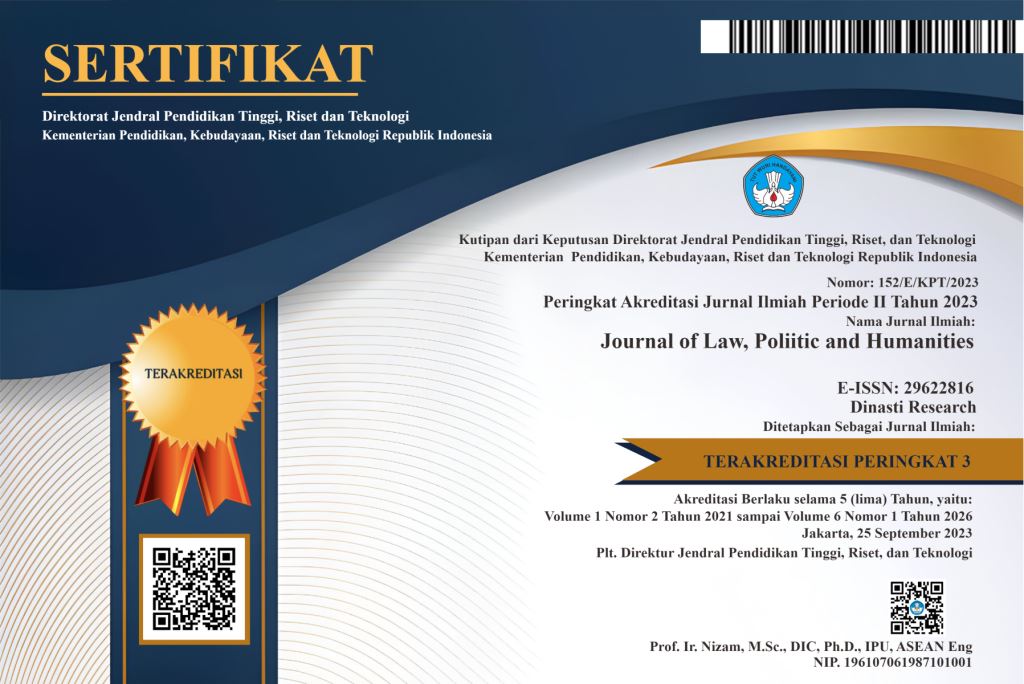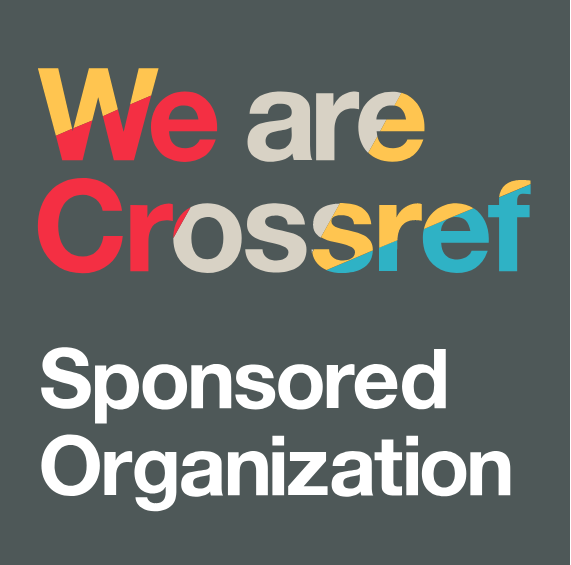Protection for Saviour Sibling Children Reviewed from, Medical Bioethics and Indonesian Positive Law
DOI:
https://doi.org/10.38035/jlph.v5i5.1818Keywords:
Medical Bioethics, Positive Law, Protection, Saviour SiblingAbstract
The development of assisted reproductive technologies such as In Vitro Fertilization (IVF) and Preimplantation Genetic Diagnosis (PGD) currently allows the birth of a child for the purpose of saving a sick sibling through a stem cell transplant or better known as saviour sibling. This practice was first successfully carried out in 2000 and continues to grow to this day around the world. This article aims to examine the bioethical aspects and legal arrangements related to the practice of saviour sibling in Indonesia, which until now has no specific regulations despite the continuous development of related technologies. The research method used is normative legal research, with qualitative analysis of primary, secondary, and tertiary legal materials. This article compares the arrangements of saviour sibling practices in several countries to identify the principles relevant to the regulation in Indonesia. The results of the study showed that this practice has significant benefits, such as saving the lives of patients with hematopoietic disorders, but also poses physical and psychological risks to children born as saviour sibling. This article recommends the need for special arrangements in Indonesia that cover aspects of ethics, law, and child welfare to ensure their implementation responsibly
References
Ahona Haque. (2023). Savior Siblings_A Battle between Ethics or Saving Lives. Diakses dari https://www.emorywheel.com/article/2023/10/savior-siblings-a-battle-between-ethics-or-saving-lives.
Ailsa Taylor. (2008). A Guide to Pre-Implantation Genetic Diagnosis. London: The Galton Institute.
Althorpe, Caleb, and Elizabeth Finneron-Burns. (2023). Are Savior Siblings a Special Case in Procreative Ethics?. Journal of Ethics and Social Philosophy. 26(1): 49–73. doi: https://doi.org/10.26556/jesp.v26i1.2623.
Anniek Corveleyn, et. all. (2007). Preimplantation Genetic Diagnosis in Europe. Spain: JRC European Commission.
Ansari, Salik, Harikeerthan Raghuram, and Anant Bhan. (2024). Saviour Siblings in India: A Reminder of Our Existing Challenges and Biases. Indian Journal of Medical Ethics. 9 (2): 168. doi: https://doi.org/10.20529/IJME.2024.012
Asplund, Kjell. (2020). Use of in Vitro Fertilization—Ethical Issues. Upsala Journal of Medical Sciences. 125 (2): 192–99. doi: https://doi.org/10.1080/03009734.2019.1684405.
BBC News. (2006). BBC NEWS_Health_Q&A_Helping a Sick Sibling. Diakses dari: http://news.bbc.co.uk/2/hi/health/4972142.stm.
BBC News Online. (2000). BBC News | HEALTH | Baby Created to Save Older Sister. Diakses dari: http://cdnedge.bbc.co.uk/1/hi/health/954408.stm%0Ahttp://news.bbc.co.uk/2/hi/health/954408.stm.
Budiyanti, R. T. (2015). Ethical Aspects of Pre-Implantation Genetic Diagnosis (PGD) in IVF Technology. Cermin Dunia Kedokteran. 42 (7): 542–44.
Jonathan Herring. (2015). Medical Law And Ethics. 6th ed. United Kingdom: Oxford University Press.
Human Fertilisation & Embryology Authority. Pre-Implantation Tissue Typing (PTT) _ HFEA. Diakses dari: https://www.hfea.gov.uk/treatments/embryo-testing-and-treatments-for-disease/pre-implantation-tissue-typing-ptt/.
Lahl, Jennifer. (2009). My Sister’s Savior—The Center for Bioethics and Culture. Diakses dari: http://www.cbc-network.org/2009/07/my-sisters-savior/.
Malaysia, Alpha IVF Fertility Center. Saviour Sibling Program (SSP) - Alpha IVF Fertility Center Malaysia. Diakses dari: https://www.alphafertilitycentre.com/id/perawatan/bantuan-reproductif/saviour-sibling-program-ssp.
Marianne Talbot. (2012). Bioethics An Introduction. New York: Cambridge University Press.
Mary Anne Bobinski, et. all. (2018). Bioethics and Public Health Law. Fourth. New York: Wolters Kluwer.
Mia Chitra Dinisari. (2022). More and more couples in Indonesia are undergoing IVF programs. https://lifestyle.bisnis.com/read/20220509/106/1531328/makin-banyak-pasangan-di-indonesia-jalani-program-bayi-tabung.
Putra, Bayu Pratama, & Hanan Khasyrawi Abrar. (2022). In Vitro Fertilisation: A Medical, Bioethical, Humanities and Professionalism Review. Jurnal Ilmiah Ecosystem. 22(2): 383–402. doi: https://doi.org/10.35965/eco.v22i2.1527.
Salim HS & Erlies Septiana Nurbani. (2016). The Application of Legal Theory in Thesis and Dissertation Research. 1st ed. Depok: PT Rajagrafindo Persada.
Samardži?, Sandra O. (2019). Saviour Siblings - Current Overview, Dilemmas and Possible Solutions?. Medicine, Law & Society. 12(2): 89–109. Doi: https://doi.org/10.18690/10.18690/mls.12.2.89-109.2019.
Sheldon, S., and S. Wilkinson. (2004). Should Selecting Saviour Siblings Be Banned?. Journal of Medical Ethics. 30(6): 533–37. doi: https://doi.org/10.1136/jme.2003.004150.
Tamparo, Marcia A Lewis & Carol D. (2007). Medical Law, Ethics & Bioethics. Sixth. Philadelphia: F. A Davis Company.
Whelan, Madeleine. (2021). Saviour Siblings: The Role of the Welfare Principle within the Law of Assisted Reproductive Technology in England and Wales (Part 1). Family Law.
Widyawati. (2022). Talasemia Penyakit Keturunan Hindari Dengan Deteksi Dini. Diakses dari: https://sehatnegeriku.kemkes.go.id/baca/rilis-media/20220510/5739792/talasemia-penyakit-keturunan-hindari-dengan-deteksi-dini/.
Wilkinson, Stephen. (2008). Saviour Siblings and Organ Transplantation. Clinical Ethics. 3(3): 107–8. doi: https://doi.org/10.1258/ce.2008.008022.
Zúñiga-Fajuri, Alejandra. (2018). Born to Donate: Proposals for ‘Savior Sibling’ Regulation in Latin America. Colombia Medica. 49(3): 228–35. doi: https://doi.org/10.25100/cm.v49i3.3619.
Downloads
Published
How to Cite
Issue
Section
License
Copyright (c) 2025 Yulia Susanti, Syofirman Syofyan, Yussy Adelina Mannas

This work is licensed under a Creative Commons Attribution 4.0 International License.
Authors who publish their manuscripts in this journal agree to the following conditions:
- The copyright on each article belongs to the author(s).
- The author acknowledges that the Journal of Law, Poliitic and Humanities (JLPH) has the right to be the first to publish with a Creative Commons Attribution 4.0 International license (Attribution 4.0 International (CC BY 4.0).
- Authors can submit articles separately, arrange for the non-exclusive distribution of manuscripts that have been published in this journal into other versions (e.g., sent to the author's institutional repository, publication into books, etc.), by acknowledging that the manuscript has been published for the first time in the Journal of Law, Poliitic and Humanities (JLPH).


























